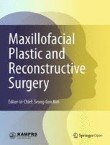Efficacy of tracheostomy for respiratory management in patients with advanced oral cancer
Many studies have been reported on tracheostomy to prevent upper airway obstruction after surgery. Among these, the scoring system proposed by Cameron et al. quantifies various factors that influence postopera...
